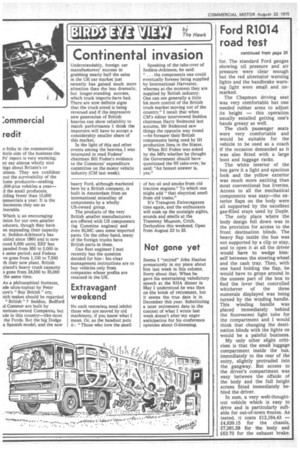:ommercial redit
Page 28

If you've noticed an error in this article please click here to report it so we can fix it.
ir folks in the commercial hide side of the business the Ps' report is very warming; ey say almost wholly nice ings about Britain's cv siness. They are confident out the survivability of the lume producers—making ,000-plus vehicles a year— .d the small producers, ,ilding fewer than 10,000 mrnercials a year. It is the -betweens they see as Inerable.
Which is an encouraging inion for our own smaller oducers, though they have en expanding their capacity st. Seddon-Atkinson's has ubled since 1960 and is now ound 5,000 units; ERF has panded from 850 to 5,000 in e same period; and Fotlens ve gone from 1,100 to 7,500 th their new plant. British !yland's heavy truck capacity s gone from 28,500 to 35,000 the same time.
As a philosophical footnote, ade ultra-topical by Peter Lore's "Buy British" cry, 3ich makes should be regarded " British " ? Seddon, Bedford Comrner are built by nerican-owned Companies but ade in this country—like most the Fords. But the big Dodge a Spanish model, and the new heavy Ford, although marketed here by a British company, is built in Amsterdam from an international miscellay of components by a wholly US-owned group.
The products of the very British smaller manufacturers are offered with US components (eg Cummins engines) and even BLMC uses some imported parts. On the other hand, many of the foreign trucks have British parts in them.
One fleet engineer I met recently has the question decided for him : his clear management instructions are to buy vehicles only from companies whose profits are retained in the UK.












































































